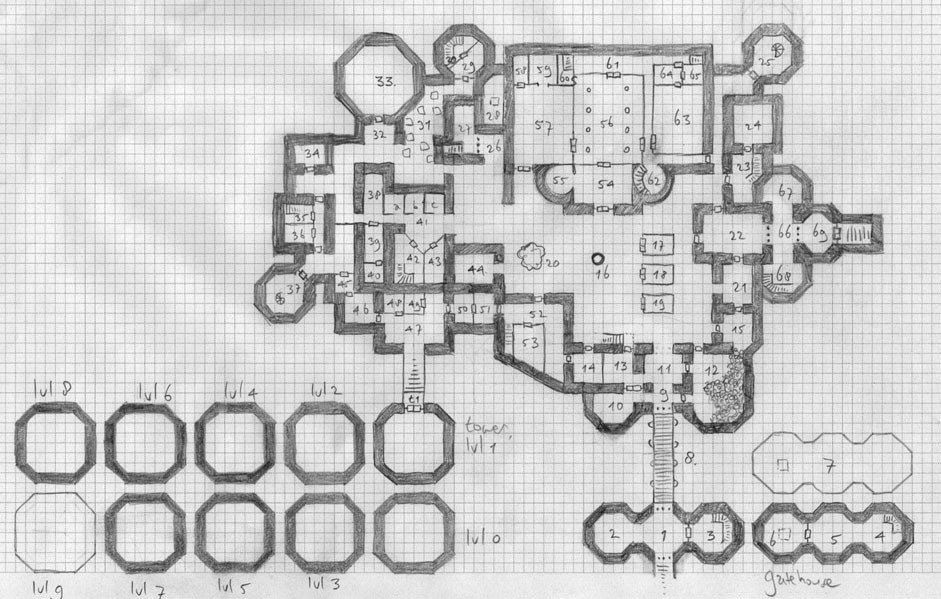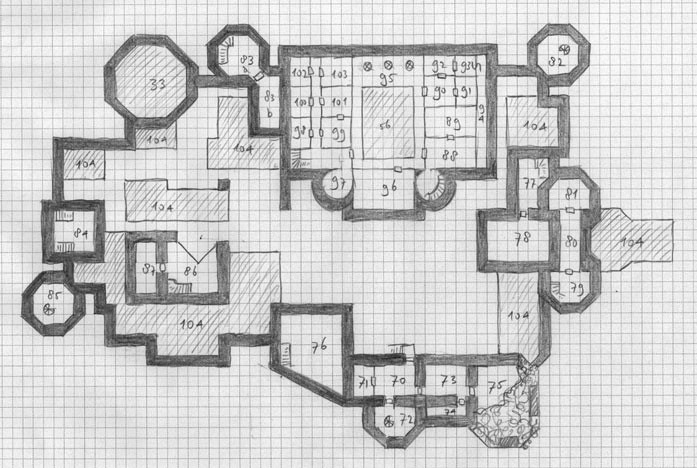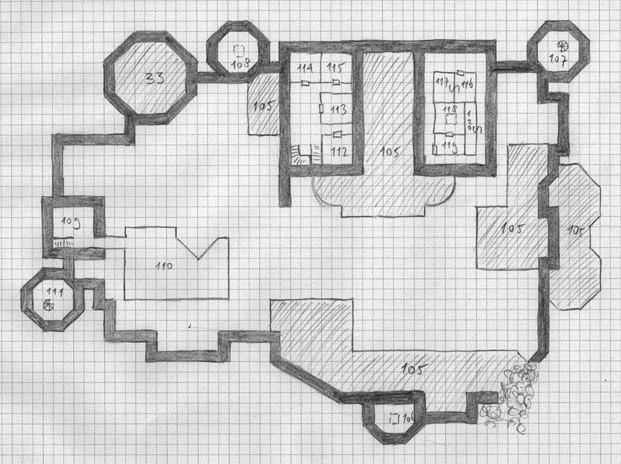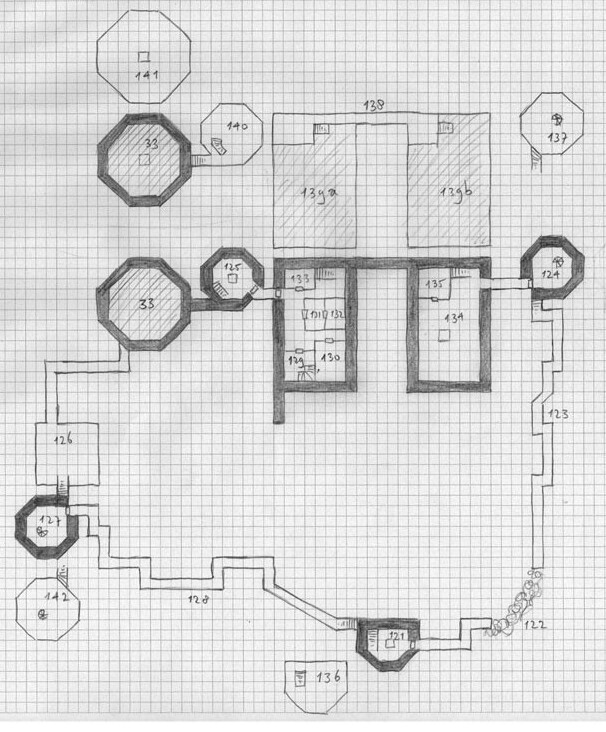A funny result of my DMing style is that my players never finish their missions. I run published Al-Qadim modules, but almost never as they’re written. I use the situation and the dungeon descriptions provided, but ignore the plot railroad, running the provided encounters only when they make sense. Because the PCs are free to go wherever they want, they often wander out of the current “story” and into a new one.
The campaign started with the PCs getting entangled with an evil cabal of fire mages, but they soon decided to follow up rumors of bandit activity and left town. They travelled with a caravan, landed in a sand storm and the afterlife, forgot about the bandits, and were hired to find an old man’s long lost love. In the genie stronghold where she was held, they failed to locate her but found a one-way portal to the City of Brass instead.
This gives a nice stories-within-stories atmosphere to the campaign, and it feels very Arabian Nights to me. I can almost hear the sultan yelling to Sherezade: ‘But did they find Sita? Tell me!’
Last session, the PCs escaped on a plane-hopping ship and made their way back to the prime material plane, but instead of leading them back to one of the former plot strands, I decided to start a new campaign sequence of sea travel, inspired by the voyages of Sinbad.
Monday I ran Melan’s excellent Isles on an Emerald Sea from Knockspell #1. So far, we didn’t do a lot of exploration based adventuring in the campaign, and this module made for a nice change of pace. The adventure provided a number of very memorable encounters.
The session started with the PCs on captain Soot’s plane-hopping ship The Ebony Queen, traveling back to Zakhara. During their travel, the ship was caught in an astral storm, and the sails were damaged. Back on the prime material, the crew started repairs. Shihab, hanging over the railing because he was seasick, saw something flickering on the horizon. The PCs decided to investigate it and landed on the isle of the birds.
Bakri found narrow stairs cut in the rock and climbed it with Jamal to investigate. At the top of the stairs they found a strange, alien idol. While they examined the inscriptions on the idol, Shihab and Zobeida were attacked by giant crabs. Bakri hurried towards the fight, leaving Jamal behind. That’s never a good idea.
Jamal sacrificed some incense he found in an earlier adventure to the idol, and his player voluntarily failed his saving throw. Jamal received a boon: seven new eyes, of which only two functional, appeared in his skull. (The two functioning eyes appeared both on his forehead, so no 360° vision for him.) The PCs are still trying to decide if they should try a remove curse to get rid of the extra eyes or, according to Jamal’s wishes, they should use a regeneration to restore eyesight to the five other eyes.
They found a roc’s nest, but luckily, the giant bird was away for the moment, and investigated the ruins. In the cellars beneath the ruins they found a statue of a goddess on a pedestal, which turned out to be not one but two mimics, “served” by 16 giant centipedes. Bakri used a scroll stolen from an efreeti sorceress and decided the fight by casting a 10th-level fireball.
In another chamber they found a well with the spectre of Osori the Creeping One bound to it. Unable to attack because of the binding, Osori begged the PCs to set him free. The PCs agreed and cast a dispel magic on the well. Of course, the spectre immediately attacked and drained two levels from Shihab. Zobeida cast a forget-spell on the spectre, causing him to forget the PCs freed him already. Thinking he was still bound and couldn’t attack the PCs, he started pleading again to release him. The PCs just walked away. We imagined Osori to stay there in the well for another thousand years, completely unaware of the fact that he was no longer bound and was free to leave at any time. Funny stuff.
Finally, a bubble of force brought them to the isle of the goddess Hakiyah, where they explored a ruined tower, befriended a pack of wild dogs, and found a mausoleum, where we ended the session.
I think it’s remarkable that the three combats this session were all decided by spellcasting: half the giant crabs were defeated with a fear-spell, the mimics and centipedes by a powerful fireball, and the spectre by casting forget. However, this didn’t feel wrong or unbalanced in any way, not even the fireball scroll which was of much higher level than the characters. At no point did it feel like the PCs shouldn’t have these abilities. On the contrary, it felt as the outcome of good play and added to the fun.
Next week we’ll finish this adventure, and more.
















